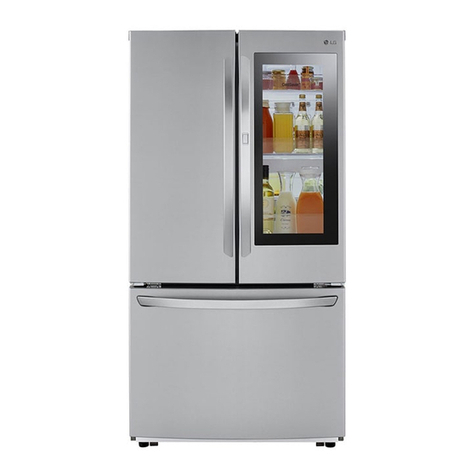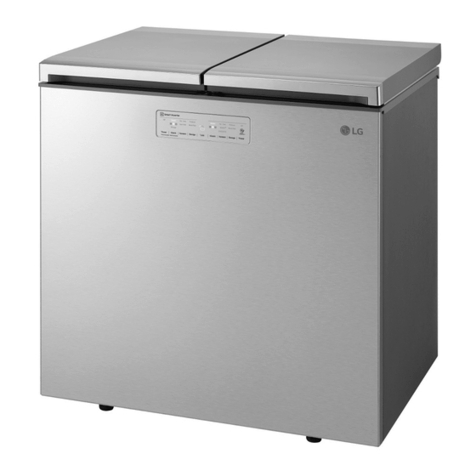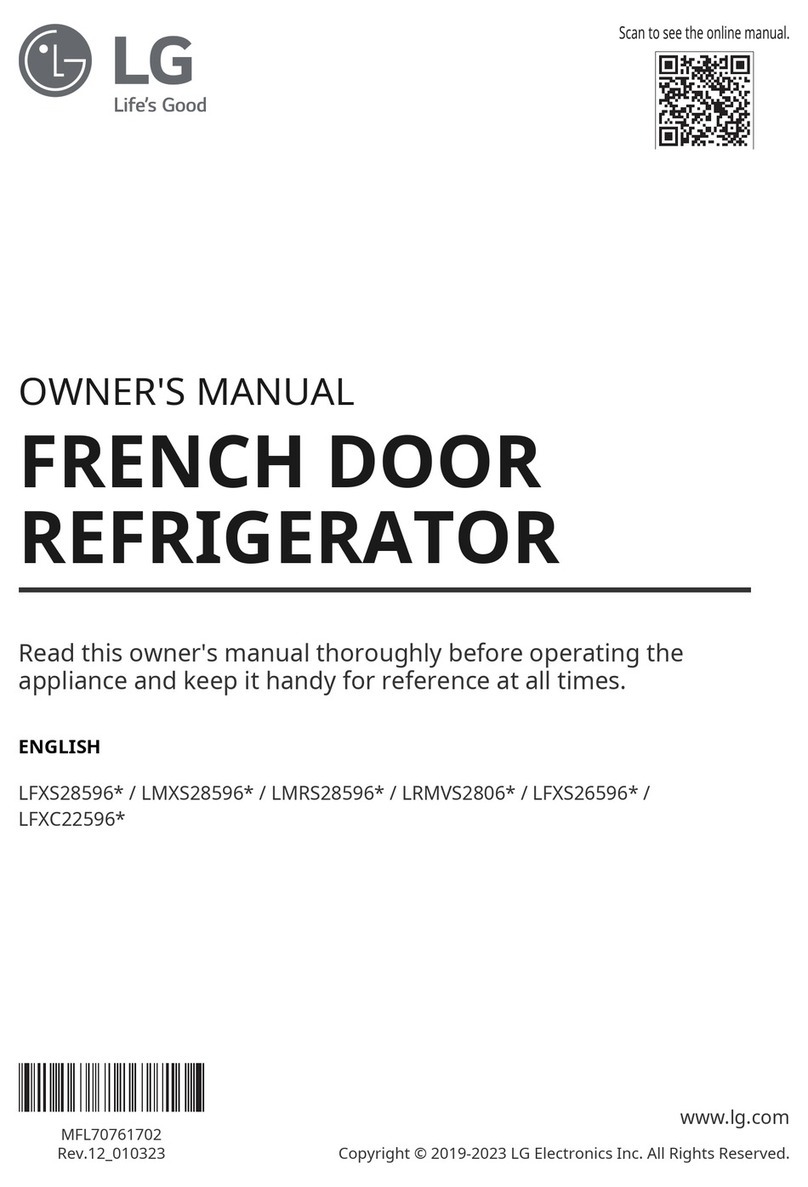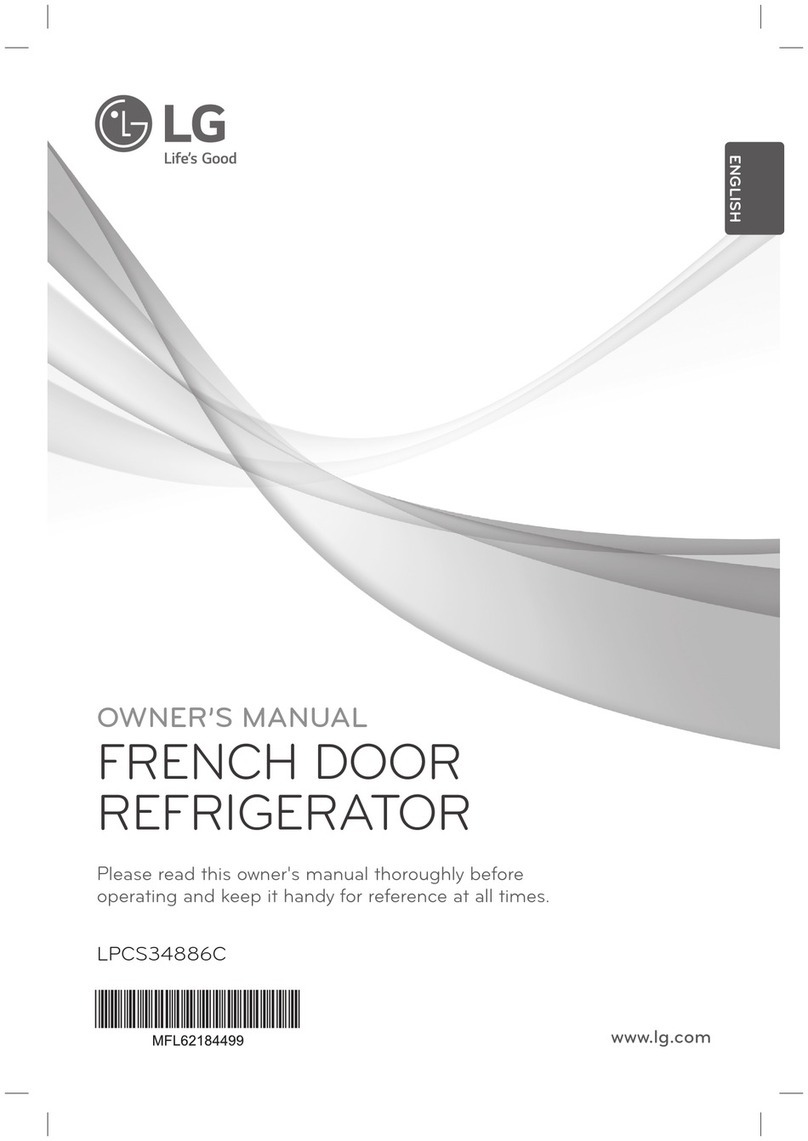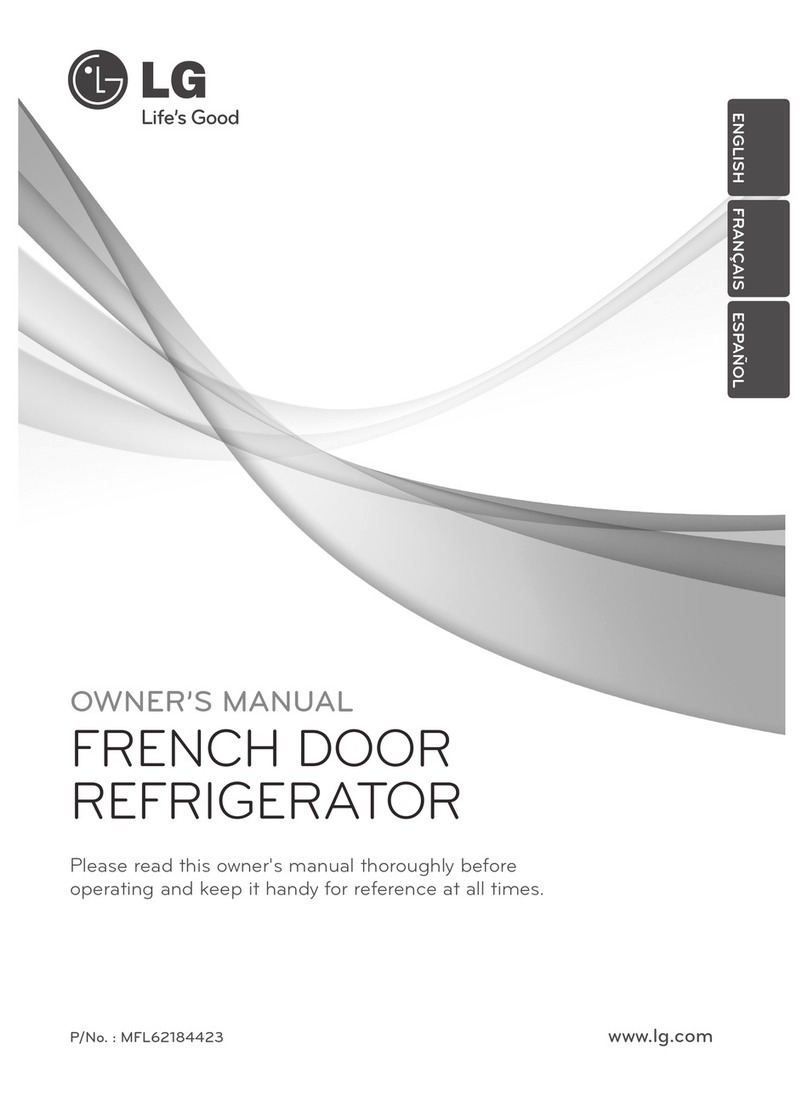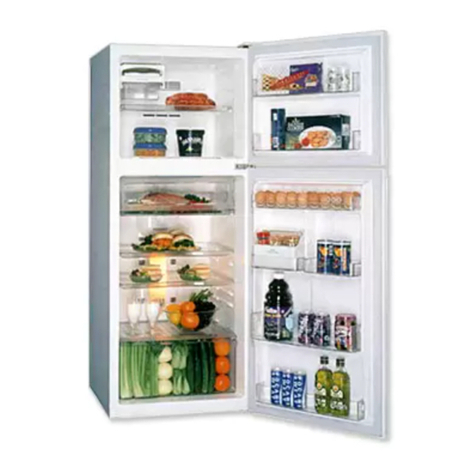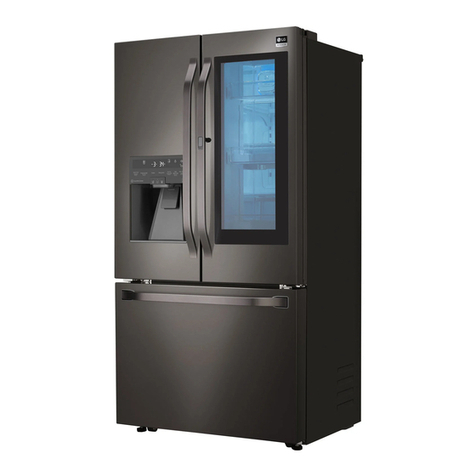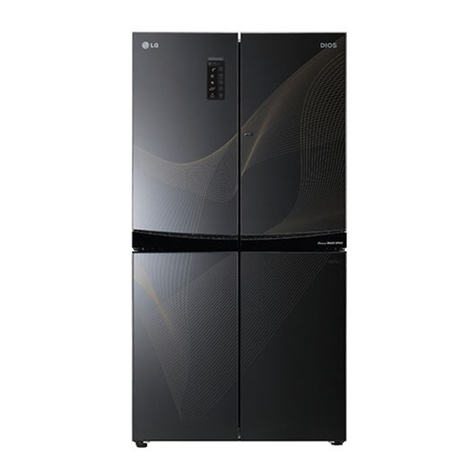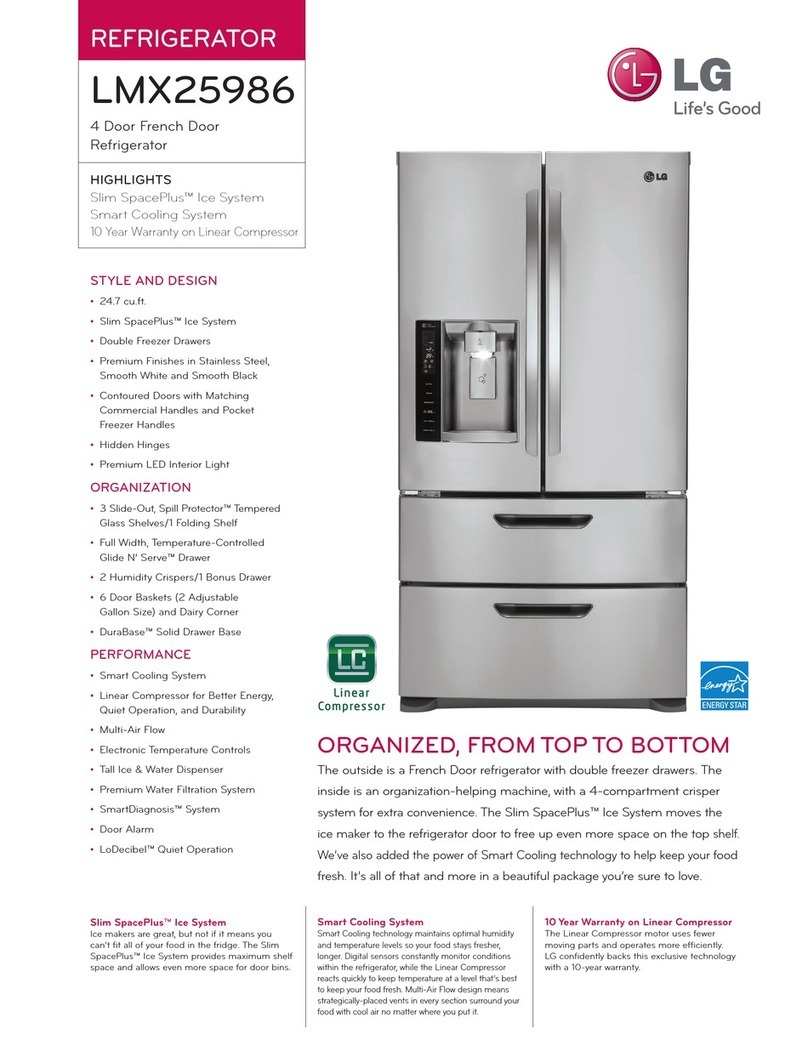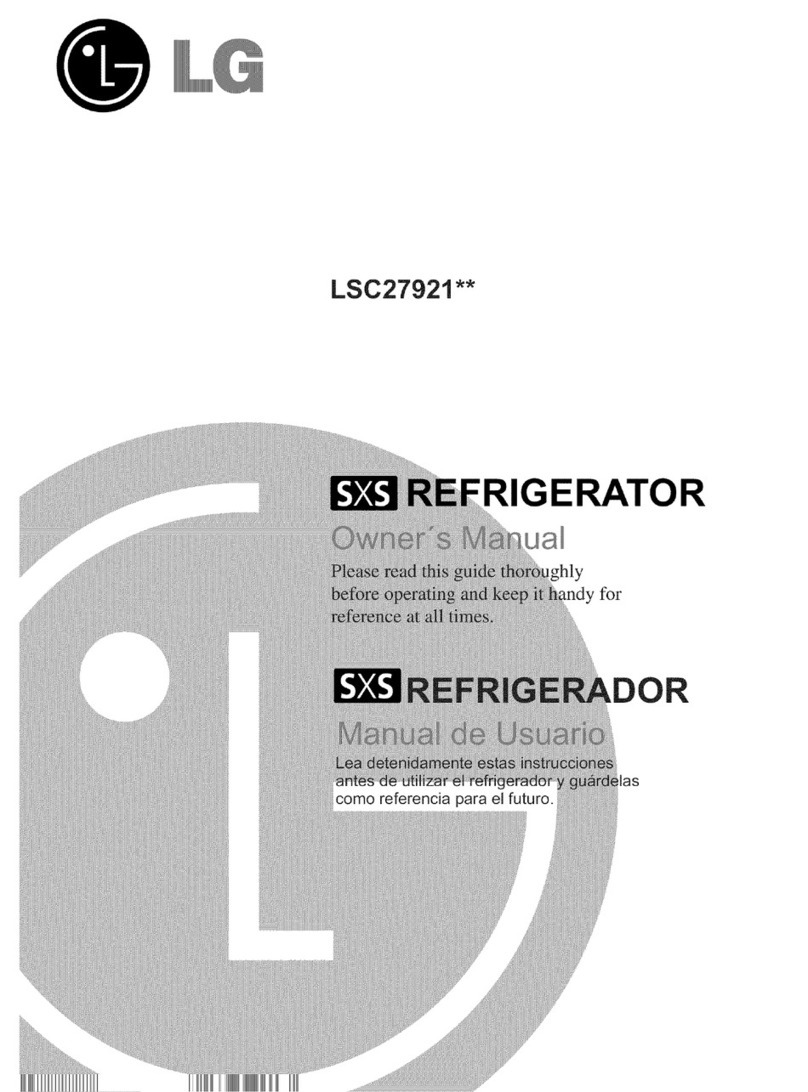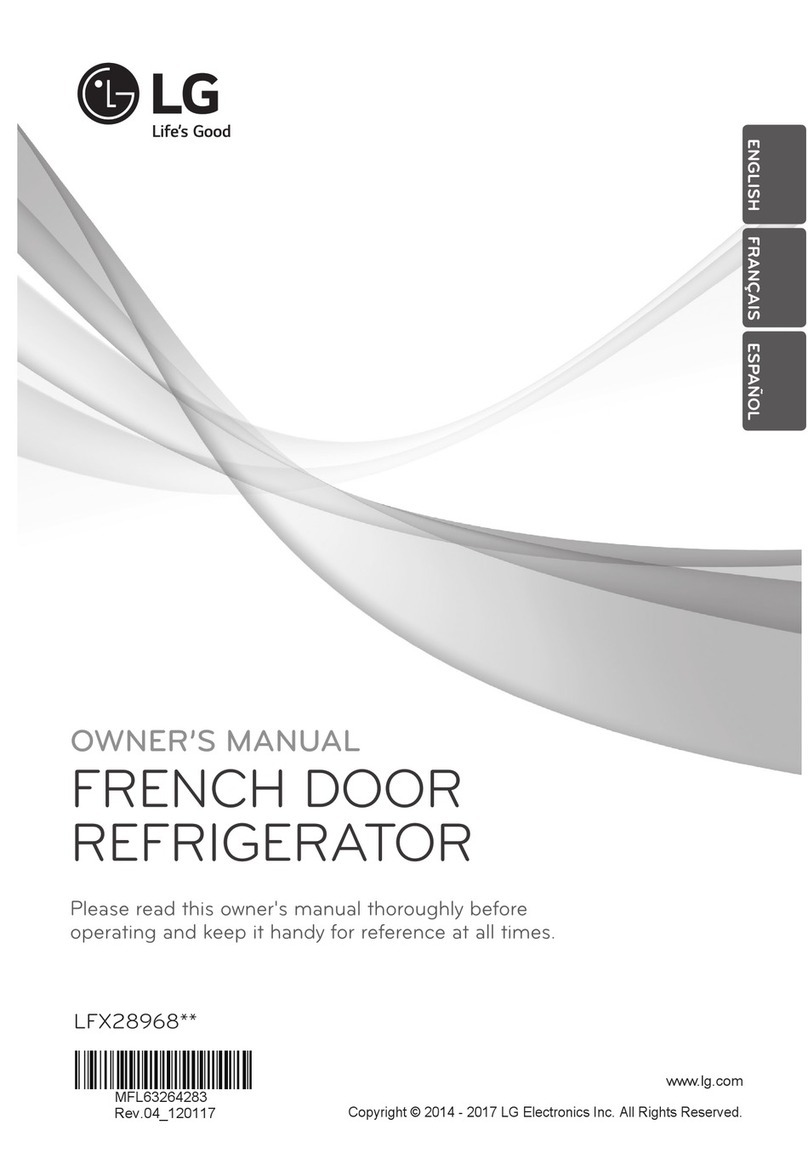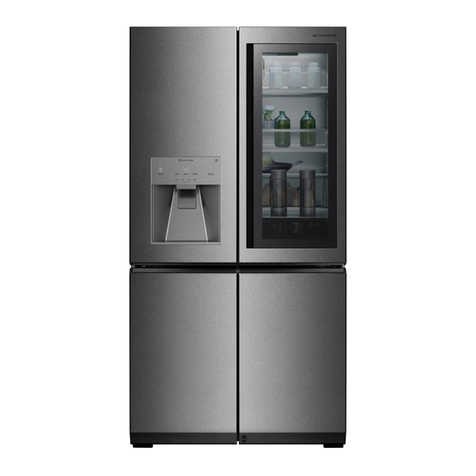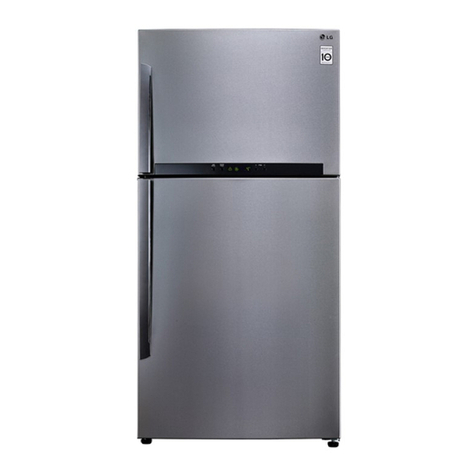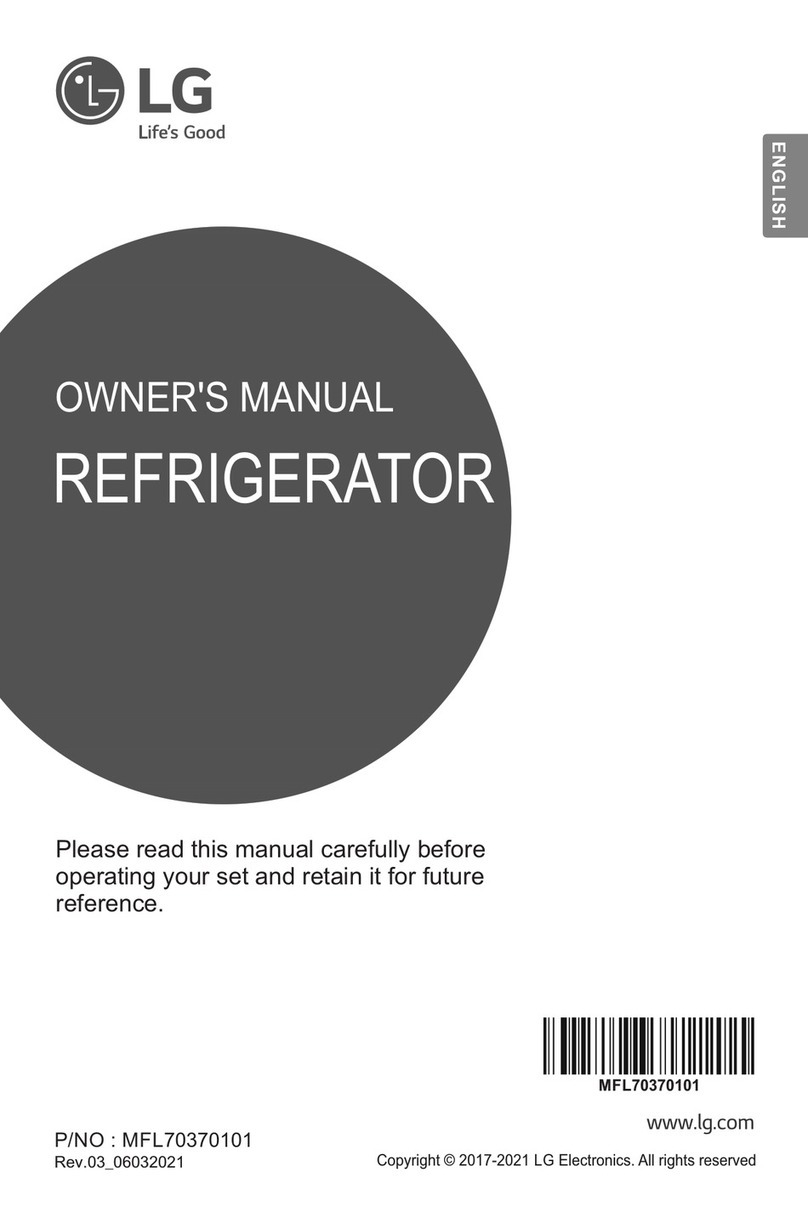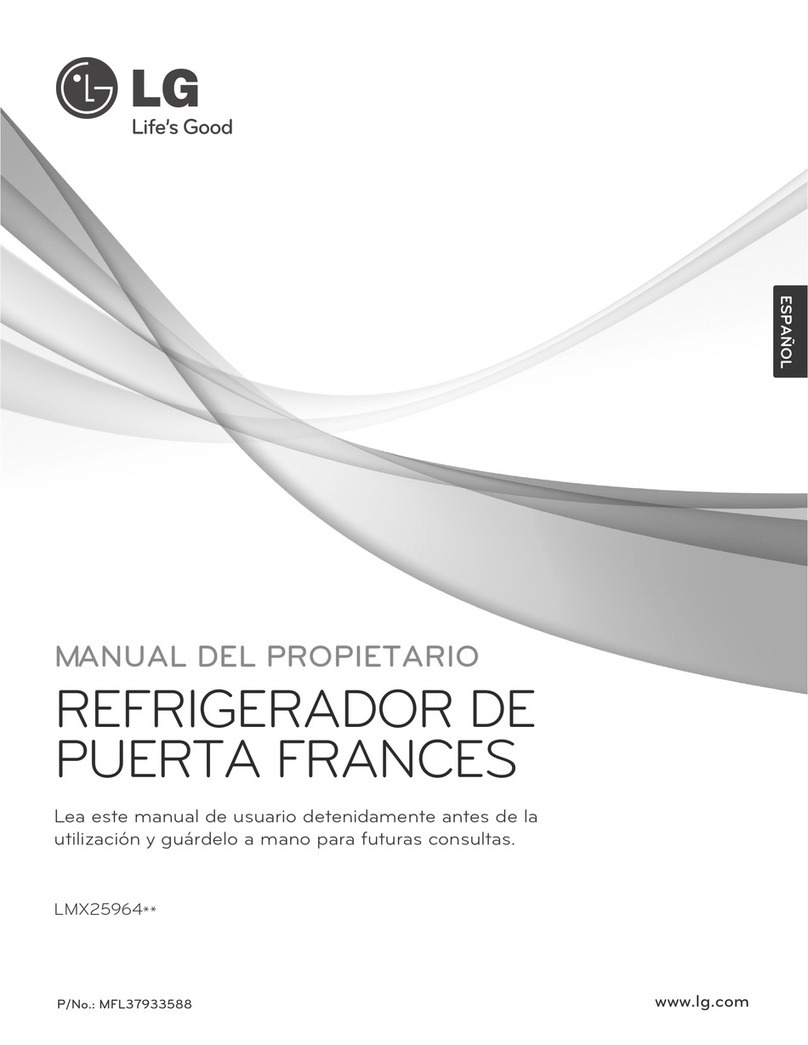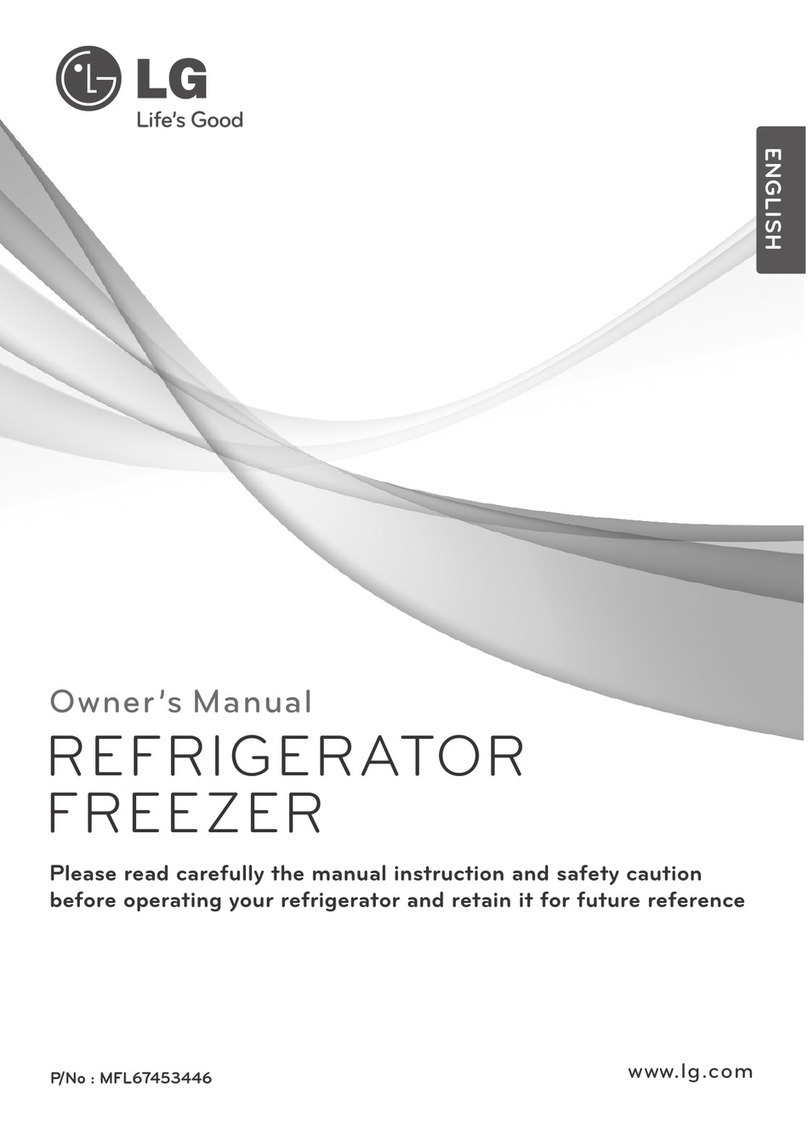5. TROUBLESHOOTING
-9-
DEFECT EFFECT CAUSE REMEDY
SYSTEM
PARTIALLY OR
COMPLETELY OUT
OF REFRIGERANT
CHARGE
EXCESSIVELY
FULL
HUMIDITY IN THE
SYSTEM
PRESENCE OF AIR
IN THE SYSTEM
BLOCKED
CAPILLARY
MOTOR-
COMPRESSOR
SHORT-CIRCUITED
OR BLOCKED
MOTOR-
COMPRESSOR
DOSE NOT
COMPRESS
NOISY MOTOR-
COMPRESSOR
Evaporator does not frost even
though motor-compressor runs
continually.
This defect is indicated by the
presence of water outside the
refrigerator near the motor caused
by formations of ice on the return
tube.
This defect is indicated by the
partial frosting of the evaporator
and by continual defrosting cycles
determined by the interruption of
the flow of gas on the evaporator.
The motor compressor keeps
running.
Poor performance of the
refrigerant system which is
indicated on the evaporator with a
slight frost which does not freeze
and an excessive overheating of
the condenser and motor-
compressor.
Because of the lack of circulation
Freon® in the system, there is no
frosting of the evaporator, while a
slight overheating of the first spiral
of the condenser is noted.
The system does not work and
the "OLP" intervenes interrupting
delivery to the motor-compressor.
No frost forms on the evaporator,
even if the motor-compressor is
apparently running regulary.
In case of mechanical failure in the
motor-compressor there in an
excessive noise when the system is
functioning. In case a suspension
spring is unhooked, banging will be
heard and there will be especially
strong vibrations when the system
starts up and stops.
An empty refrigerant system
indicates a leakage of R134a.
This loss is generally to be looked
for at the soldering points
connecting the various components
or in an eventual hole in the
evaporator made by the user.
If in the refrigerant system a
quantity of R134a is introduced
which is greater than that
indicated, the excess gas does
not terminate its expansion in
the evaporator but proceeds into
the return tube.
The refrigerant system is humid
when there is a small percentage
of water present, which, not
completely retained by the
dehydrator filter, enters into
circulation with the Freon® and
freezes at the capillary exit in the
evaporator.
There is air in the refrigerating
system when during the filling
phase vacuum is not effected or it
is not adequately done.
Impurities contained in the Freon®
or in the components of the
refrigeration system before
assembly and not retained by the
filter can obstruct the capillary.
In case of short circuit, the
breakdown is due to the electric
winding. If blocked, there is a
mechanical failure in the motor-
compressor.
In this case there is a mechanical
failure in the diaphram valves which
remaining continually open, do not
permit the compressor to operate.
Consequentely, Freon® does not
circulate in the system.
The cause of the excessive noise
is normally to be sought for in a
mechanical breakdown, and only
rarely in the unhooking of one of
the suspension springs.
Leakage must be eliminated by
resoldering the defective point or
substituting the damaged
evaporator.
The system must be emptied and
subsequently refilled introducing
the correct quantity of R134a.
The system must be emptied and
then refilled after eliminating the
humidity.
Group must be drained and
subsequently refilled after
carefully creating vacuum.
To restore the system it must be
emptied, substitute the capillary or
the evaporator entirely in case the
capillary is coaxial with respect to
the return tube, then refill it.
The motor-compressor must be
replaced and then proceed with
refilling.
The motor-comprossor must be
replaced and then proceed with
refilling.
The motor-compressor must be
replaced and then proceed with
the refilling.
